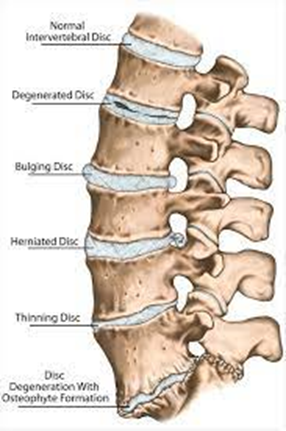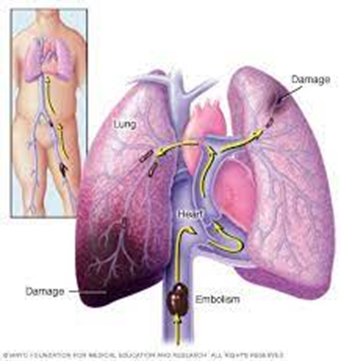A nurse is teaching a client who has multiple sclerosis about factors that can worsen their manifestations. Which of the following factors should the nurse include in the teaching?
Flying
Sunbathing
Working in an office
High altitude travel
The Correct Answer is B
Choice A Reason:
Flying itself is not typically considered a factor that worsens MS manifestations. However, factors related to flying, such as stress, fatigue, changes in routine, and potential exposure to infections, may contribute to symptom exacerbation in some individuals with MS.
Choice B Reason:
Sunbathing is appropriate. Exposure to excessive heat, such as sunbathing or prolonged exposure to hot weather, can lead to temporary worsening of MS symptoms, a phenomenon known as Uhthoff's phenomenon. Increased body temperature can temporarily impair nerve conduction in individuals with MS, resulting in exacerbation of symptoms such as fatigue, weakness, sensory disturbances, and cognitive impairment.
Choice C Reason:
Working in an office is inappropriate. Working in an office environment is not inherently associated with exacerbation of MS manifestations. However, factors such as stress, fatigue, poor ergonomic conditions, and limited mobility during prolonged periods of sitting may contribute to symptom exacerbation in some individuals with MS.
Choice D Reason:
High altitude travel is inappropriate. High altitude travel can exacerbate MS symptoms due to the decreased oxygen levels and potential changes in barometric pressure at high altitudes. Hypoxia (low oxygen levels) at high altitudes may exacerbate fatigue, weakness, and cognitive impairment in individuals with MS. Changes in barometric pressure can also trigger or worsen symptoms such as headaches, sensory disturbances, and balance problems in some individuals with MS.
Nursing Test Bank
Naxlex Comprehensive Predictor Exams
Related Questions
Correct Answer is C
Explanation
Choice A Reason:
Paralytic ileus is incorrect. Paralytic ileus is a condition characterized by obstruction of the intestines due to paralysis of the intestinal muscles, resulting in symptoms such as abdominal pain, bloating, and constipation. Paralytic ileus is not typically associated with cauda equina syndrome, which primarily affects the nerves in the lower back and lower extremities.
Choice B Reason:
Blood pressure 80/48 mm Hg is incorrect. While cauda equina syndrome can cause neurological symptoms such as lower extremity weakness, numbness, and bowel or bladder dysfunction, it is not typically associated with alterations in blood pressure. Blood pressure changes may occur in response to pain or other systemic factors, but they are not specific to cauda equina syndrome.
Choice C Reason:
Weakness in one or both legs is correct. Yes, weakness in one or both legs is a characteristic finding of cauda equina syndrome. Compression of the nerve roots in the lower spinal cord can lead to motor deficits, including weakness, difficulty walking, and loss of reflexes in the lower extremities.
Choice D Reason:
Potassium 3.2 mEq/L is incorrect. Serum potassium levels are not typically associated with cauda equina syndrome. Abnormal potassium levels may be indicative of electrolyte imbalances, which can occur in various medical conditions but are not specific to cauda equina syndrome.

Correct Answer is D
Explanation
Correct answer: D
Choice A Reason:
Decreased pulmonary vascular resistance is incorrect. Inflammatory mediators released in response to a pulmonary embolism can lead to vasoconstriction and increased pulmonary vascular resistance. This is part of the body's response to redirect blood flow away from the affected area of the lung and maintain adequate perfusion to other areas.
Choice B Reason:
Hypercapnia is incorrect. Hypercapnia refers to elevated levels of carbon dioxide (CO2) in the blood.Hypocapnia usually is present with embolism; hypercapnia, on the other hand, is rare.
Choice C Reason:
Hypoventilation is incorrect. Hypoventilation occurs when there is inadequate ventilation of the lungs relative to metabolic demands. In the context of a pulmonary embolism, hypoventilation can occur due to factors such as pain, respiratory muscle fatigue, or impaired gas exchange, all of which can be influenced by the release of inflammatory mediators.
Choice D Reason:
Respiratory alkalosis is correct.In response to the blockage and the resulting inflammation, the body often increases the respiratory rate as a compensatory mechanism to maintain adequate oxygen levels and remove carbon dioxide.Due to the increased breathing rate, there is excessive exhalation of carbon dioxide, leading to a decrease in the partial pressure of CO2 in the blood. This results in an increase in blood pH, causing respiratory alkalosis.

Whether you are a student looking to ace your exams or a practicing nurse seeking to enhance your expertise , our nursing education contents will empower you with the confidence and competence to make a difference in the lives of patients and become a respected leader in the healthcare field.
Visit Naxlex, invest in your future and unlock endless possibilities with our unparalleled nursing education contents today
Report Wrong Answer on the Current Question
Do you disagree with the answer? If yes, what is your expected answer? Explain.
Kindly be descriptive with the issue you are facing.
